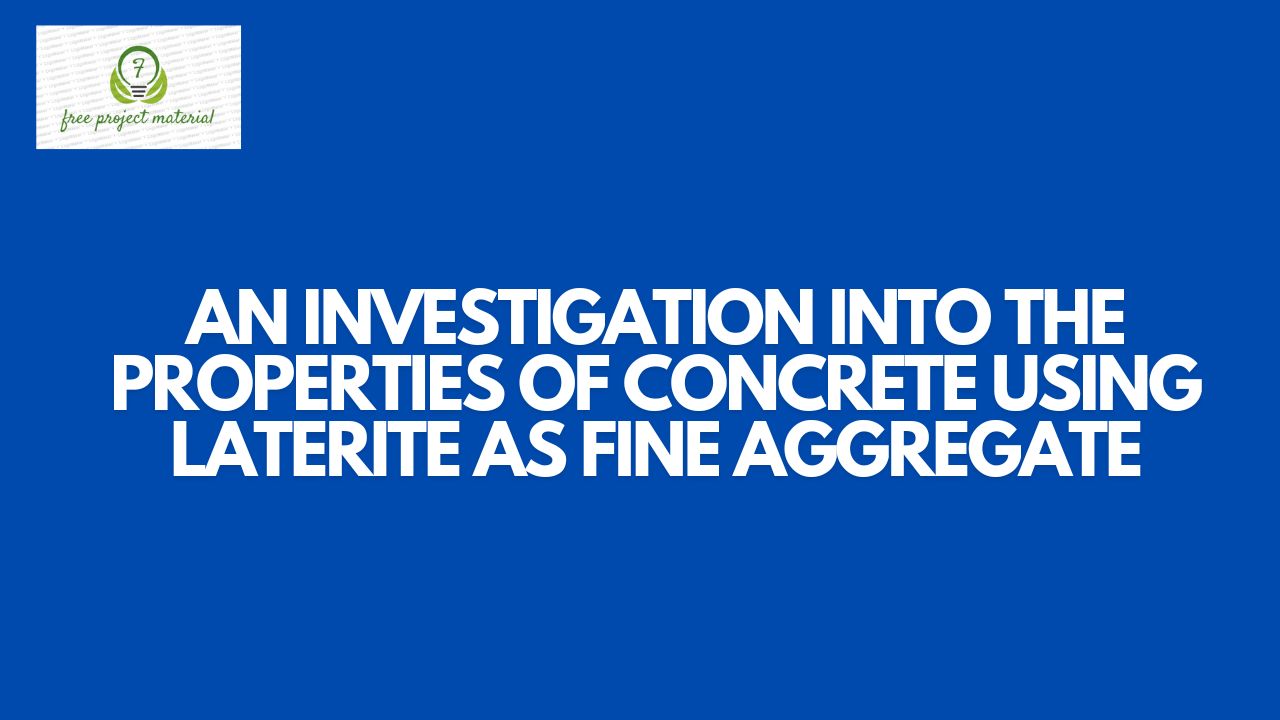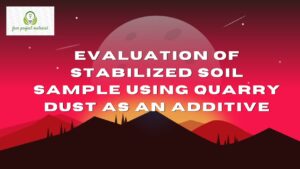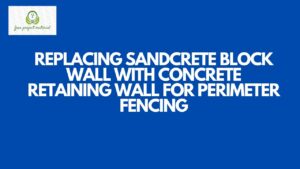ABSTRACT
During the pre-independence of the building culture in Nigeria, laterite were mainly used for making blocks which were accurate durable and accessible enough for them to meet their housing needs. One of the aim and objective of this project is to determine the compressive strength of concrete cubes. The sample was collected from Julius Berger borrow pit located at ukana opposite sunshine battery in Essien Udim L.G.A Akwa Ibom State. According to the aims and objective of this work, this sample obtained was stabilized with cement, laterite, coarse aggregate and water concrete cubes which were tested for strength and durability.
TABLE OF CONTENTS
Title Page – – – – – – – – i
Certification – – – – – – – – ii
Dedication – – – – – – – – iii
Acknowledgement – – – – – – – iv-v
Abstract – – – – – – – – vi
Table of content – – – – – – – vii-xii
List of tables and figures – – – – – – xii
CHAPTER ONE
1.0 Introduction
1.1 Back ground of the study – – – – – 1-2
1.2 Aim and objectives of the study – – – – 2
1.3 significance of the study – – – – – 2-3
CHAPTER TWO
Literature Review
2.0 Introduction
2.1 Concrete cubes- – – – – – – 4
2.2 Soil stabilization- – – – – – – 5
2.3 Types of stabilization – – – – – – 5-6
2.4 Laterite – – – – – – – – 6
2.4.1 Physical properties of laterite – – – – 7
2.4.2 Advantages of laterite – – – – – 7
2.5 Cement – – – – – – – – 8
2.6 Coarse aggregate (Gravel) – – – – – 8
2.7 Water – – – – – – – – 8
CHAPTER THREE
3.1 Materials and Method
3.1 .1 Cement – – – – – – – 9
3.1.2 Laterite – – – – – – – 9
3.1.3 Coarse aggregate (gravel) – – – – – 10
3.1.4 Water – – – – – – – – 10
3.2 Method used in the practical – – – – 10-11
3.3 Atomic Absorbtion spectrometer (AAS) Test – – 11
3.4 Sieve Analysis – – – – – – – 11-12
3.4.1 Procedures – – – – – – – 12
3.4.2 Observation – – – – – – – 13
3.4.3 Precaution – – – – – – – 13
3.5 Slump test — – – – – – – 14
3.5.1 Procedure – – – – – – – 15
3.5.2 Observations – – – – – – – 15
3.5.3 Precausions – – – – – – – 16
3.6 Optimum moisture content (O. M. C) Test – – 17
3.6.1 Procedure – – – – – – – 17-18
3.6.2 Observations – – – – – – – 18
3.6.3 Precausion – – – – – – – 18
3.7 Cube moulding – – – – – – – 18-19
3.7.1 Procedures – – – – – – – 19-20
3.8.2 Observations – – – – – – – 20
3.7.3 Precacusion – – – – – – – 21
3.8 Curing of concrete cubes – – – – – 21
3.8.1 Procedures – – – – – – – 21
3.8.2 Observations – – – – – – – 21
3.8.3 Precausions – – – – – – – 22
3.9 Crushing of cubes – – – – – – 22
3.9.1 Procedure – – – – – – – 22-23
3.9.2 Observations – – – – – – – 23
- 9.3 Precausions – – – – – – – 23
CHAPTER FOUR
RESULT AND DISCUSSION
4.1 Calculation and tables
4.1.1 Atomic Absorption spectrometer (AAS) Test table – 24
4.2 Sieve Analysis tables – – – – – – 25
4.2.1 Calculation on percentage weight retained on – 26
- 2.2 Calculations on cumulative weight retained – – 27
4.2.3 Calculation on percentage weight retained – – 27-29
4.2.4 Sieve analysis graph
4.3 Optimum moisture content (O. M. C) test table – – 30
4.3.1 Calculation on optimum moisture contents – – 31-32
4.4. Cube crushing table – – – – – – 33
4.4.1 Calculation on compressive strength – – – 34-37
4.2.2 Graph on compressive strength
CHAPTER FIVE
RECOMMENDATIONS AND CONCLUSIONS
5.1 Conclusion – – – – – – – 38
5.2 Recommendation – – – – – – 39
Reference
Appendix
LIST OF TABLES
Tables
Table 1: Atomic Absorption spectrometer table showing the chemical properties of laterite Page – – – – 24
Table 2: sieve Analysis table showing the percentage passing on each sieve page – – – – – – – – 25
Table 3: Optimum moisture content table showing the me moisture content in the material page – – – – – 30
Table 4: Showing the compressive strength of the cubes due to deference days of curing – – – – – – 33
CHAPTER ONE
INTRODUCTION
1.1 BACKGROUND OF THE STUDY
Laterite is one of the natural building materials of be used in compressed Earth blocks (CEB) because it is generally well graded soil that combines both cohesive (silt and clay) and non- cohesive (sand and gravel) part of the soil.
Laterite soil are considered to be formed in hot and wet tropical areas. Laterite are reddish in color which is as the result of Irons and aluminum present in the soil. It can also be used as blocks for building without any cement content.
Laterite are widely distributed throughout the world in the region with high rainfall, but especially in the inter tropical regions of Africa, Australia, India, South- East and South- America where they generally occurs just below the surface of grassland or forest clearing. Their extension indicates that conditions were favorable for their formation at some point in time in the history of the world but not necessarily simultaneously in all regions (Maignien, 1966). Laterite contributes to the general economy of the region where the are found.
Laterite were mainly used for making blocks during the pre- independence of the building culture in Nigeria.
Nigeria was absolutely depends on earth building technique such as mud bricks which were accurate, durable and accessible enough for them to meet their housing needs.
1.2 AIMS AND OBJECTIVES OF THE STUDY
(i) To determine the compressive strength of concrete cubes.
(ii) To know if concrete cubes is good in construction.
1.3 SIGNIFICANT OF THE STUDY
This study has the following significance:
Laterite blocks have the greater amount in compressive strength in other to achieve adequate strength for the load bearing walls.
It also have its advantages which are more economical building material than that of the sand crete blocks.
It shows that laterites blocks is rich in density when compacted more than sand crete blocks which provides more solid and durable walls is buildings.
Laterite soils are reddish in color which is used as blocks for buildings without any cement content.
This project determines laterite blocks as a building material for a sustainable house construction and also investigating the characterization of laterite soil and their properties.



